
| << back to palms list Washingtonia Filibusta (Washingtonia filibusta) |
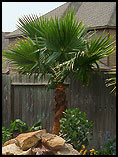 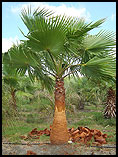 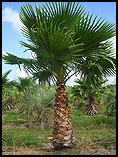 Click to Enlarge Photos 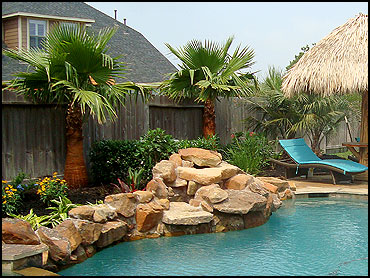  From 7-25' Clear Trunk 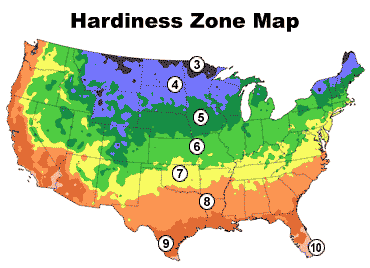 |
Description A cross between two species of palms, Washingtonia filifera and Washingtonia robusta, the “filibusta” is thought by many in the landscape industry to be a superior hybrid. This hybrid carries many of the traits and characteristics of its “parents” mixed into a palm that is fairly fast growing. Filibustas tend to have a heavier trunk then the Robusta variety but not as gigantic as the Filifera. The fronds too are larger than is commonly found on the Robusta but again, not as large as the Filifera. Filibustas are cold hardy up into Zone 8. Once established onsite, these palms will take freezes down into the mid teens. During these extreme freeze events, the canopies will burn back but so long as the palms were otherwise healthy, they will grow back out during a single season. Filibustas are an excellent choice for streetscapes, rows and individual or staggered group accent plantings. The canopies measure 8-10 feet across and the trunks can be thatched for a more natural look or skinned for a cleaner, more formal look. Culture Both species of Washingtonia as well as their hybrid offspring, the “Filibusta”, do well in full sun or in light shade and they will tolerate extreme heat and drought after establishment. Good drainage near the surface is very important and the species adapts well to a wide range of soil conditions. Availability Groundworks Texas and Groundworks palm Station stocks gorgeous filibustas in sizes up to 7’ of trunk and we have excellent availability all the way up to 25’ of trunk. At our Texas American Tree farm we have approximately 15000 Filibustas under various stages of production as well. This species is relatively inexpensive and is a perfect choice where budgets are tight and true, proven performer are required. |
Copyright © 2008-2018 Groundworks, All Rights Reserved.
The Professionals Choice for Specimen Palms Since 1986
800-753-5127